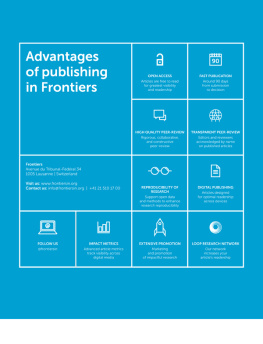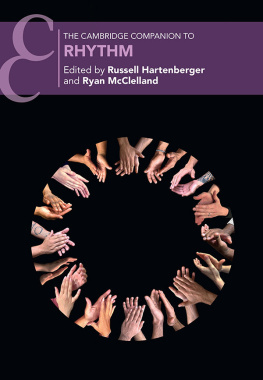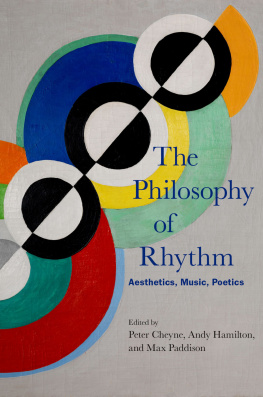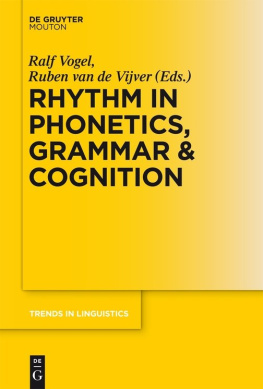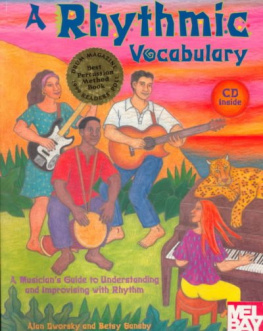FRONTIERS COPYRIGHT STATEMENT
Copyright 2007-2018 Frontiers Media SA. All rights reserved.
All content included on this site, such as text, graphics, logos, button icons, images, video/audio clips, downloads, data compilations and software, is the property of or is licensed to Frontiers Media SA (Frontiers) or its licensees and/or subcontractors. The copyright in the text of individual articles is the property of their respective authors, subject to a license granted to Frontiers.
The compilation of articles constituting this e-book, wherever published, as well as the compilation of all other content on this site, is the exclusive property of Frontiers. For the conditions for downloading and copying of e-books from Frontiers website, please see the Terms for Website Use. If purchasing Frontiers e-books from other websites or sources, the conditions of the website concerned apply.
Images and graphics not forming part of user-contributed materials may not be downloaded or copied without permission.
Individual articles may be downloaded and reproduced in accordance with the principles of the CC-BY licence subject to any copyright or other notices. They may not be re-sold as an e-book.
As author or other contributor you grant a CC-BY licence to others to reproduce your articles, including any graphics and third-party materials supplied by you, in accordance with the Conditions for Website Use and subject to any copyright notices which you include in connection with your articles and materials.
All copyright, and all rights therein, are protected by national and international copyright laws.
The above represents a summary only. For the full conditions see the Conditions for Authors and the Conditions for Website Use.
ISSN 1664-8714
ISBN 978-2-88945-500-3
DOI 10.3389/978-2-88945-500-3
About Frontiers
Frontiers is more than just an open-access publisher of scholarly articles: it is a pioneering approach to the world of academia, radically improving the way scholarly research is managed. The grand vision of Frontiers is a world where all people have an equal opportunity to seek, share and generate knowledge. Frontiers provides immediate and permanent online open access to all its publications, but this alone is not enough to realize our grand goals.
Frontiers Journal Series
The Frontiers Journal Series is a multi-tier and interdisciplinary set of open-access, online journals, promising a paradigm shift from the current review, selection and dissemination processes in academic publishing.
All Frontiers journals are driven by researchers for researchers; therefore, they constitute a service to the scholarly community. At the same time, the Frontiers Journal Series operates on a revolutionary invention, the tiered publishing system, initially addressing specific communities of scholars, and gradually climbing up to broader public understanding, thus serving the interests of the lay society, too.
Dedication to Quality
Each Frontiers article is a landmark of the highest quality, thanks to genuinely collaborative interactions between authors and review editors, who include some of the worlds best academicians. Research must be certified by peers before entering a stream of knowledge that may eventually reach the public - and shape society; therefore, Frontiers only applies the most rigorous and unbiased reviews.
Frontiers revolutionizes research publishing by freely delivering the most outstanding research, evaluated with no bias from both the academic and social point of view.
By applying the most advanced information technologies, Frontiers is catapulting scholarly publishing into a new generation.
What are Frontiers Research Topics?
Frontiers Research Topics are very popular trademarks of the Frontiers Journals Series: they are collections of at least ten articles, all centered on a particular subject. With their unique mix of varied contributions from Original Research to Review Articles, Frontiers Research Topics unify the most influential researchers, the latest key findings and historical advances in a hot research area!
Find out more on how to host your own Frontiers Research Topic or contribute to one as an author by contacting the Frontiers Editorial Office:
THE EVOLUTION OF RHYTHM COGNITION: TIMING IN MUSIC AND SPEECH
Topic Editors:
Andrea Ravignani, Vrije Universiteit Brussel, Belgium; Sealcentre Pieterburen, Max Planck Institute for Psycholinguistics, Netherlands
Henkjan Honing, University of Amsterdam, Netherlands
Sonja A. Kotz, Maastricht University, Netherlands; Max-Planck Institute for Human Cognitive and Brain Sciences, Germany

Image: ioat/Shutterstock.com
Human speech and music share a number of similarities and differences. One of the closest similarities is their temporal nature as both (i) develop over time, (ii) form sequences of temporal intervals, possibly differing in duration and acoustical marking by different spectral properties, which are perceived as a rhythm, and (iii) generate metrical expectations.
Human brains are particularly efficient in perceiving, producing, and processing fine rhythmic information in music and speech. However a number of critical questions remain to be answered: Where does this human sensitivity for rhythm arise? How did rhythm cognition develop in human evolution? How did environmental rhythms affect the evolution of brain rhythms? Which rhythm-specific neural circuits are shared between speech and music, or even with other domains?
Evolutionary processes long time scales often prevent direct observation: understanding the psychology of rhythm and its evolution requires a close-fitting integration of different perspectives. First, empirical observations of music and speech in the field are contrasted and generate testable hypotheses. Experiments exploring linguistic and musical rhythm are performed across sensory modalities, ages, and animal species to address questions about domain-specificity, development, and an evolutionary path of rhythm. Finally, experimental insights are integrated via synthetic modeling, generating testable predictions about brain oscillations underlying rhythm cognition and its evolution.
Our understanding of the cognitive, neurobiological, and evolutionary bases of rhythm is rapidly increasing. However, researchers in different fields often work on parallel, potentially converging strands with little mutual awareness. This research topic builds a bridge across several disciplines, focusing on the cognitive neuroscience of rhythm as an evolutionary process. It includes contributions encompassing, although not limited to: (1) developmental and comparative studies of rhythm (e.g. critical acquisition periods, innateness); (2) evidence of rhythmic behavior in other species, both spontaneous and in controlled experiments; (3) comparisons of rhythm processing in music and speech (e.g. behavioral experiments, systems neuroscience perspectives on music-speech networks); (4) evidence on rhythm processing across modalities and domains; (5) studies on rhythm in interaction and context (social, affective, etc.); (6) mathematical and computational (e.g. connectionist, symbolic) models of rhythmicity as an evolved behavior.
Citation: Ravignani, A., Honing, H., Kotz, S. A., eds. (2018). The Evolution of Rhythm Cognition: Timing in Music and Speech. Lausanne: Frontiers Media. doi: 10.3389/978-2-88945-500-3
Table of Contents
1.PERSPECTIVES
1.1.GENERAL
Andrea Ravignani, Henkjan Honing and Sonja A. Kotz
Sundeep Teki
Jamie Forth, Kat Agres, Matthew Purver and Geraint A. Wiggins
Next page
